Table of Contents
Introduction
Marketing goes beyond just being seen; it’s all about precision, performance, and making a real impact. Brands continually refine their strategies to strike the optimal balance between creativity and analytics, seeking to achieve both engagement and conversions.
When it comes to effective approaches, Performance Marketing and Social Media Marketing really shine as two strong yet different pillars of digital growth. Each one has its own framework, data model, and understanding of audience behavior that shapes how brands connect.
Grasping the differences between these two isn’t merely an academic exercise — it’s a crucial strategic choice. The skill to select or combine these models wisely can make all the difference in whether a business flourishes in the competitive digital landscape or gets lost in the algorithm shuffle.
Understanding Performance Marketing

Performance marketing has truly become the cornerstone of measurable growth.
- Data-Centric Approach: Performance marketing revolves around analytics, KPIs, and attribution models. Every decision is backed by metrics that track engagement, cost efficiency, and conversion rates in real time.
- Pay-for-Result Model: Here, advertisers only pay when a defined action — like a click, lead, or sale — takes place. This cost-efficient structure minimizes wasted spend and maximizes ROI through goal-based campaigns.
- Platform Diversity: It spans multiple digital channels, including Google Ads, affiliate programs, and display networks. Each platform serves a unique purpose — from driving immediate sales to expanding lead funnels.
- Continuous Optimization: Performance marketing thrives on testing and iteration. Real-time insights allow marketers to tweak campaigns, refine targeting, and boost conversion efficiency through constant performance evaluation.
Unlike the more traditional branding approaches, it focuses on accountability and tangible success, allowing marketers to connect every rupee spent to specific results.
Understanding Social Media Marketing
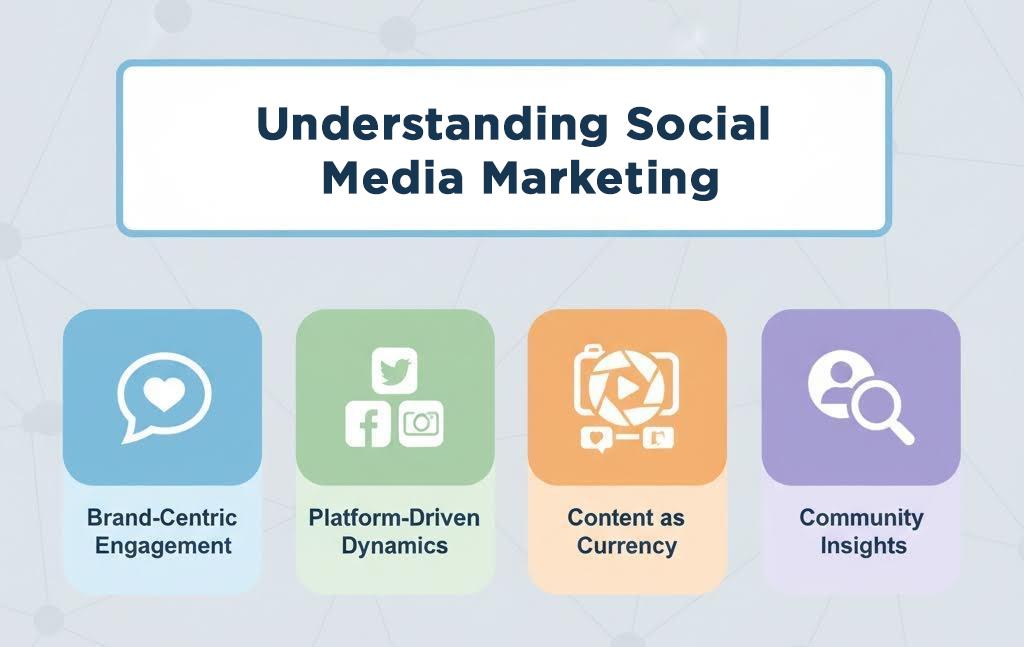
Social media marketing is the creative heart of digital strategy — where storytelling, community, and brand personality meet engagement metrics.
- Brand-Centric Engagement: Unlike performance marketing, this approach emphasizes building long-term brand identity. Through consistent visuals, tone, and messaging, brands shape audience perception and loyalty.
- Platform-Driven Dynamics: Each platform — from Instagram and LinkedIn to X (Twitter) — operates on distinct algorithms and audience behavior. Success depends on adapting content formats and posting strategies to each ecosystem.
- Content as Currency: Creative storytelling is the driving force here. Posts, reels, and campaigns are designed to spark conversations, amplify reach, and humanize the brand experience.
- Community Insights: Modern social media marketing isn’t guesswork. Platforms offer in-depth insights into demographics, engagement trends, and sentiment analysis — empowering brands to refine strategies with data-backed precision.
It’s not just about presence; it’s about influence, perception, and connection across digital platforms.
Benefits of Both Approaches
Grasping the strengths of each marketing model is key for businesses to effectively align them with their goals.
Benefits of Performance Marketing
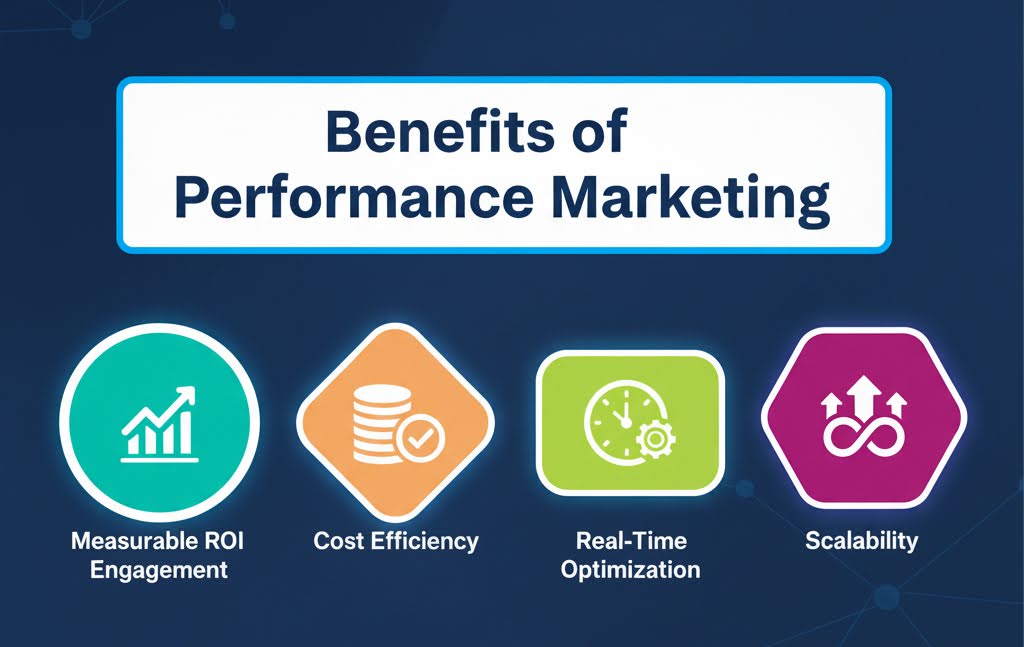
- Measurable ROI: Every campaign is trackable, offering complete transparency on how each click or impression translates into revenue. This precision helps brands make informed, data-backed decisions.
- Cost Efficiency: Since advertisers pay only when a target action occurs, it minimizes budget wastage. Businesses can scale campaigns confidently, knowing every penny contributes to tangible results.
- Real-Time Optimization: Performance marketing tools allow instant performance tracking, enabling marketers to adjust targeting, bids, or creatives based on live analytics. This agility ensures continuous improvement.
- Scalability: Successful campaigns can be quickly scaled across platforms and markets. Once a winning strategy is identified, brands can amplify it for broader reach without losing efficiency.
Benefits of Social Media Marketing
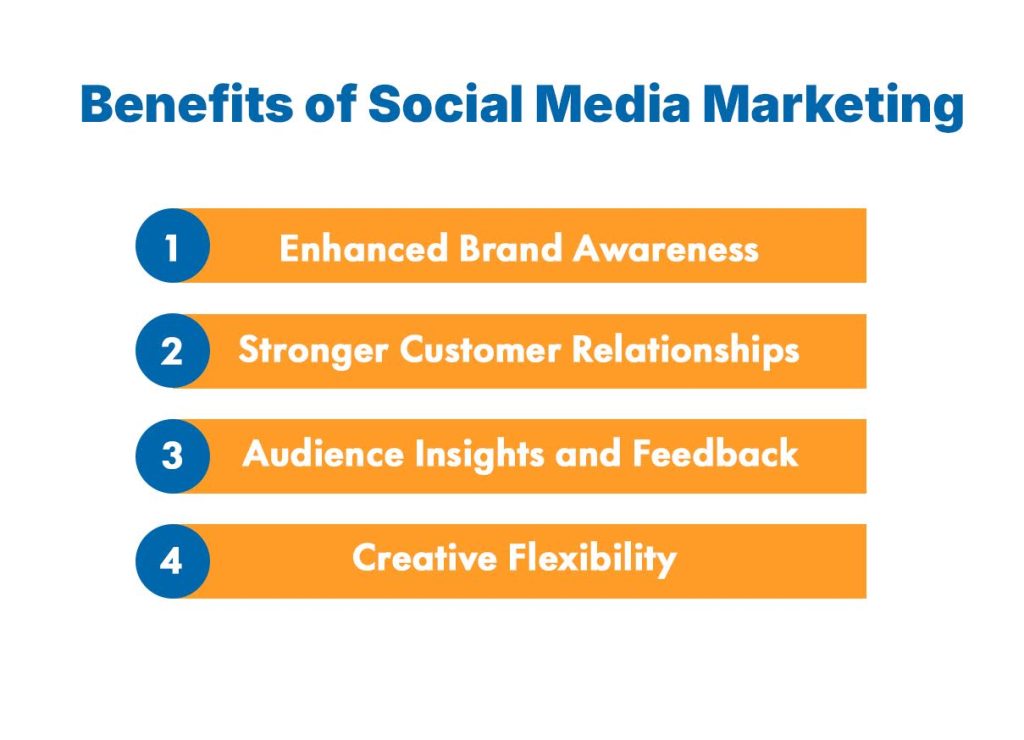
- Enhanced Brand Awareness: Social media platforms provide a vast reach, helping brands establish visibility and connect with diverse audiences across geographies. It’s a long-term investment in recognition.
- Stronger Customer Relationships: Engagement through comments, messages, and interactive content builds loyalty and trust. It humanizes the brand and fosters genuine community connections.
- Audience Insights and Feedback: Social media analytics reveal audience preferences, behaviors, and sentiment — data that guides future content and advertising strategies.
- Creative Flexibility: Brands can experiment with visuals, formats, and trends to maintain relevance. This adaptability keeps campaigns fresh and aligned with evolving audience interests.
Comparative Analysis
Both performance marketing and social media marketing fall under the broad umbrella of digital marketing, but they have different goals, methods, and ways to measure success. By grasping these differences, brands can make smarter, data-driven decisions.
Performance Marketing
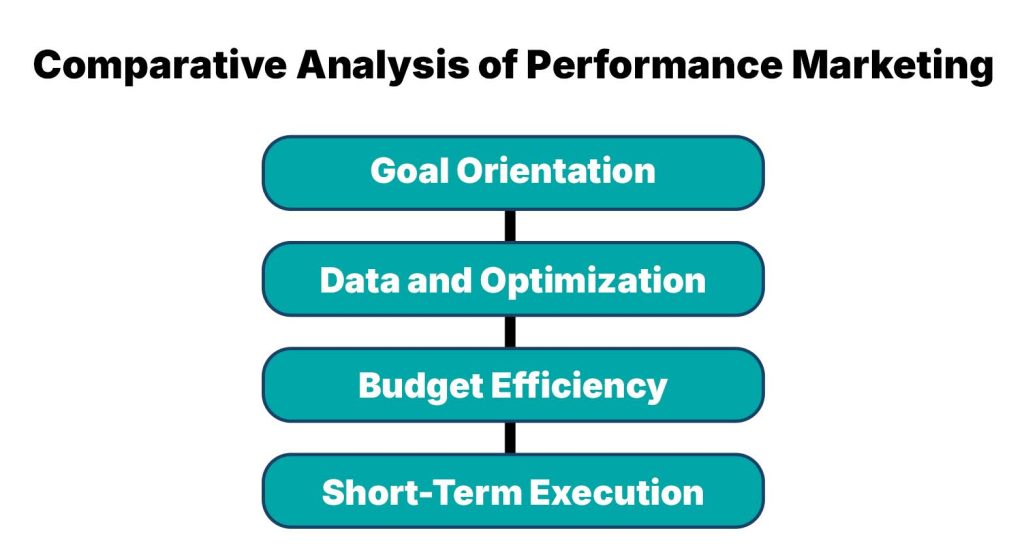
- Goal Orientation: Performance marketing is purely results-driven, focusing on quantifiable actions like conversions, clicks, or leads. Every rupee spent is tied to a measurable outcome, ensuring financial accountability.
- Data and Optimization: It thrives on analytics and automation tools. Campaigns are continuously optimized through A/B testing, audience segmentation, and performance tracking in real time.
- Budget Efficiency: Advertisers pay only when the target action occurs, making it a low-risk, high-ROI model. This efficiency attracts e-commerce, SaaS, and startups seeking rapid growth.
- Short-Term Execution: Performance campaigns are agile and time-bound, ideal for driving quick conversions and testing new market strategies.
Social Media Marketing
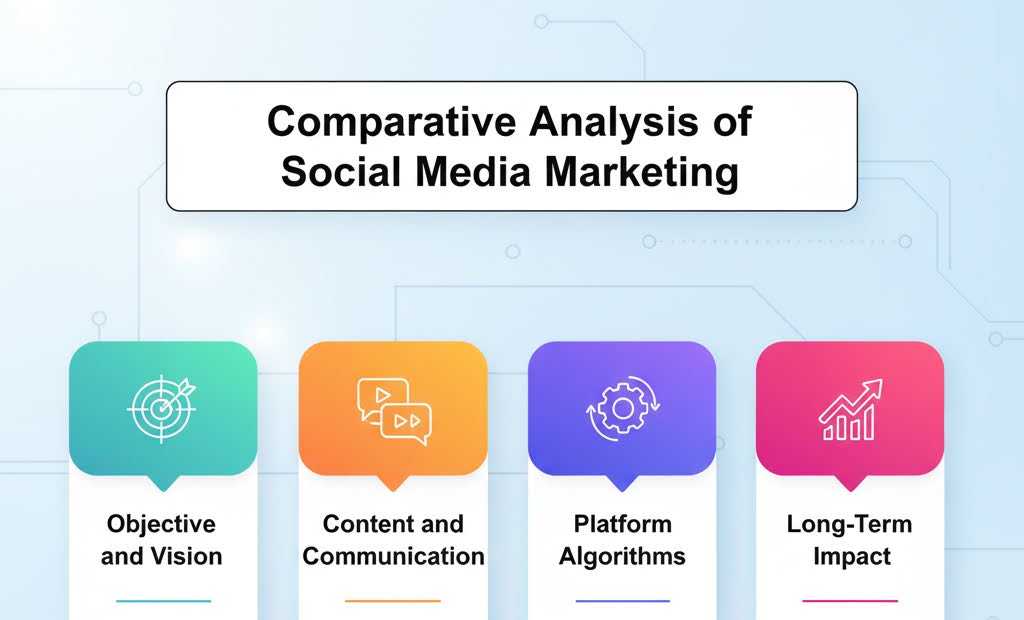
- Objective and Vision: Social media marketing emphasizes awareness and emotional connection rather than immediate conversion. It builds brand identity and credibility over time.
- Content and Communication: Here, storytelling takes center stage. Visuals, captions, and community interactions establish personality and relatability, fostering loyalty among audiences.
- Platform Algorithms: Success depends on understanding and adapting to constantly evolving platform algorithms. Timing, trends, and engagement signals drive visibility.
- Long-Term Impact: Unlike performance campaigns, social media growth compounds over time. Consistent interaction strengthens reputation, trust, and long-term audience retention.
Integration of Both Approaches
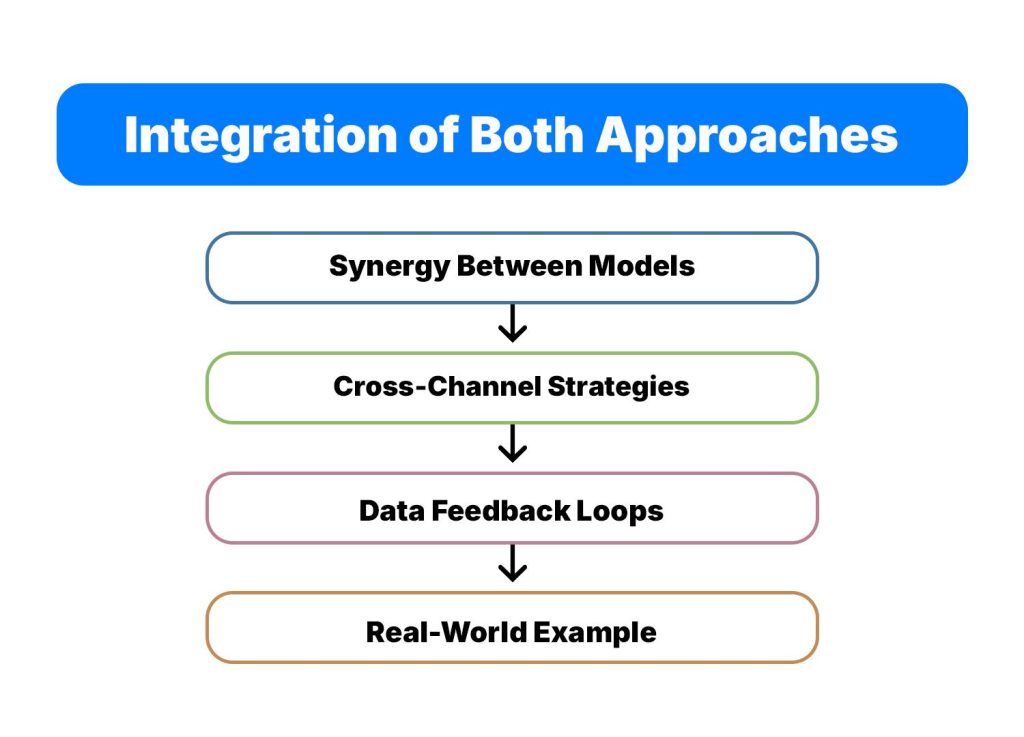
By blending performance marketing with social media efforts, brands can create a cohesive approach where building awareness and driving conversions go hand in hand, ultimately boosting both reach and return on investment.
- Synergy Between Models: Performance marketing ensures data-backed conversions, while social media drives emotional connection and visibility. When aligned, they create a seamless journey — from initial engagement to final purchase.
- Cross-Channel Strategies: Smart marketers use social platforms for top-of-funnel awareness and performance channels for lower-funnel conversion. For instance, a viral Instagram campaign can later fuel targeted retargeting ads via Google or Meta Ads.
- Data Feedback Loops: Combining both strategies strengthens analytics. Insights from performance campaigns refine social content strategies, while engagement data from social platforms enhances audience targeting for paid ads.
- Real-World Example: Brands like Nike and Spotify master this balance — blending emotional storytelling on social media with precision-driven ad campaigns. This hybrid model boosts both brand perception and measurable sales performance.
Strategic Alignment
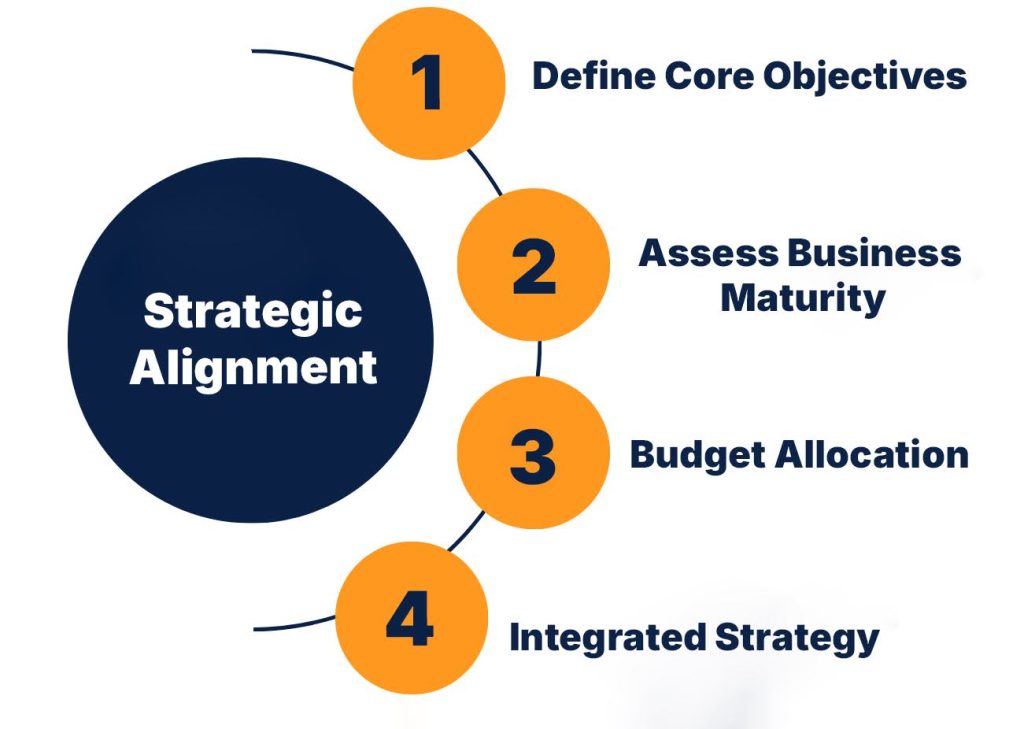
Selecting between performance and social media marketing isn’t about superiority — it’s about strategic alignment.
- Define Core Objectives: If the goal is instant conversions and measurable ROI, performance marketing is ideal. For brands aiming to strengthen visibility and long-term reputation, social media marketing delivers sustained impact.
- Assess Business Maturity: Startups and e-commerce businesses often lean toward performance marketing for quick traction. Established brands with strong recognition benefit more from ongoing social engagement.
- Budget Allocation: Performance marketing offers predictable returns tied directly to spend, while social media marketing demands consistent investment to build organic growth and community trust.
- Integrated Strategy: The most effective marketing ecosystems combine both. Using social media to nurture brand identity while leveraging performance marketing for conversion-driven campaigns creates a full-funnel strategy.
The right choice depends on a brand’s objectives, audience behavior, budget, and stage of digital maturity.
Conclusion
In the ever-changing world of digital marketing, both performance and social media marketing play crucial roles in driving growth, each bringing its own unique advantages to the table.
Instead of picking one over the other, savvy brands today find success by blending both approaches. Performance marketing provides accountability and drives conversions, while social media marketing boosts brand awareness and cultivates loyalty—together, they form a robust, data-driven ecosystem.
In the end, achieving success is all about finding the right balance: merging creativity with analytics, emotion with efficiency, and maintaining a strong brand presence alongside performance.
Deepak Wadhwani has over 20 years experience in software/wireless technologies. He has worked with Fortune 500 companies including Intuit, ESRI, Qualcomm, Sprint, Verizon, Vodafone, Nortel, Microsoft and Oracle in over 60 countries. Deepak has worked on Internet marketing projects in San Diego, Los Angeles, Orange Country, Denver, Nashville, Kansas City, New York, San Francisco and Huntsville. Deepak has been a founder of technology Startups for one of the first Cityguides, yellow pages online and web based enterprise solutions. He is an internet marketing and technology expert & co-founder for a San Diego Internet marketing company.



